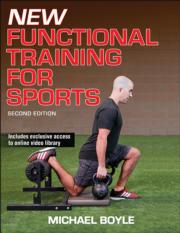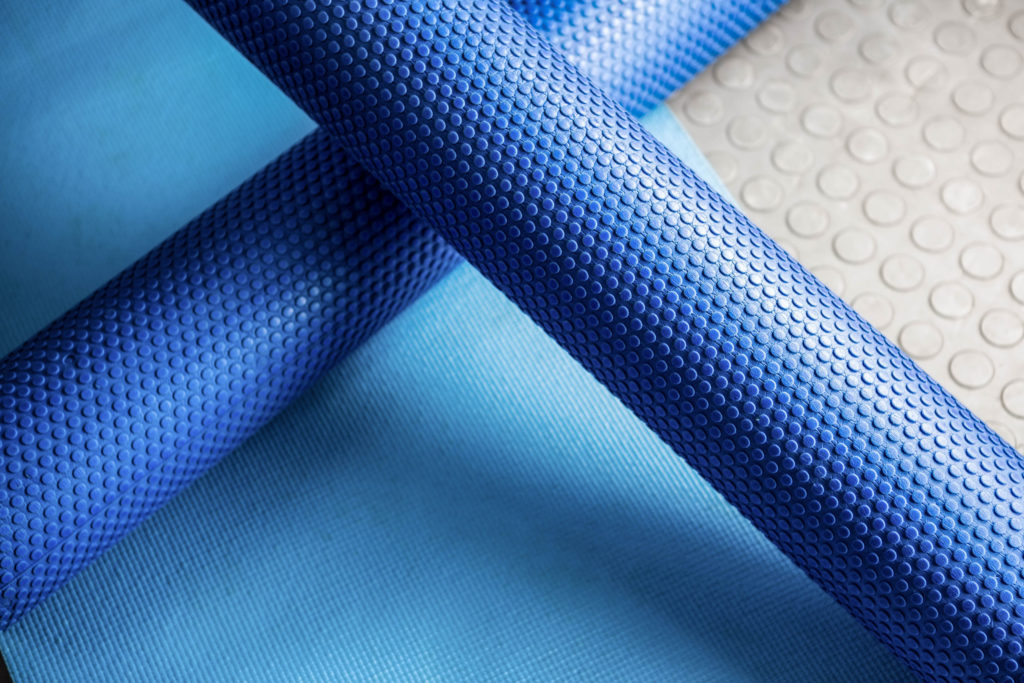Here’s the deal: Whether or not someone should stretch and/or utilize the foam roller is up to them. There’s research and anecdotal evidence to back up both sides of the argument
I find value in both as a coach. Considering we’re talking about a 5-10 minute “investment,” and the abyss of benefits involved – improved tissue quality, increased tissue extensibility, decreased likelihood of injury, a more primed CNS, 1007% increase in general level of sexiness – I feel implementing both is a no-brainer.
Copyright: wavebreakmediamicro / 123RF Stock Photo
There’s a degree of expectation management involved, however:
1. Foam Rolling – harder doesn’t mean better. People seem to be under the impression that the more you grimace and induce “pain,” the more benefit you’re getting.
Here’s the progression most people take:
“Soft” Foam Roller —> “Hard” Foam Roller —> Rumble Roller (the one with those spikey thingamabobbers) —> PVC Pipe —> Barbell or Straight Up Lead Pipe —> Live Grenade.
Some people take foam rolling to the next level, as if the goal is to earn a Badge of Hardcoreness. BTW: that badge needs to happen. I do not agree with this approach and find it defeats the purpose.
I also understand there are camps out there who feel foam rolling is a complete waste of time. I tend to call in like with THIS response from Kevin Neeld.
2. Stretching – Lets be honest: this is the first thing that gets “tossed” when there’s a time crunch with training. I hate doing it, you hate doing it, the Easter bunny hates doing, everyone hates doing it. However, it’s hard to discount the mountain of research and anecdotal evidence that it works and does help people feel better.
And I know most people reading along agree with my train of thought: “I should do more of it.”
A funny thing: people tend to stretch what “feels good” or what they’re good at. Or, more commonly, they stretch, but they’re not stretching what they think they’re stretching.

I.e., not a good hip flexor stretch
Nonetheless, while I could keep going on and on and on I want to defer to my colleague, Shane McLean, who offers up some of his insights and “go to” rolling and stretching strategies he uses with his clients.
Enjoy.
To Roll and Stretch Or Not To Roll and Stretch (That is the Question)
Foam Rolling
Don’t you love that person who grabs the foam roller, plonks himself in the middle of the gym and proceeds to twist, grunt and grimace like a game of Twister?
Yeah, that person definitely needs a talking too.
Foam rolling is either better than sliced bread or a complete waste of time depending on whose camp you’re in. However, there is plenty of middle earth ground.1
You should think of foam rolling as a poor man’s massage. Having hands on you with the massage therapist inflicting pain is definitely more effective than the roller. However, foam rolling is cheaper and more accessible.
Just don’t go overboard.
Mike Boyle explains his rationale for foam rolling in The New Functional Training for Sports  2nd edition. He thinks foam rolling can help combat muscle creep.
2nd edition. He thinks foam rolling can help combat muscle creep.
Muscle creep is the extensibility of soft tissues which are those loaded under low pressure for an extended period of time.
A stretched muscle will attempt to go back to its resting length but will give up and in an attempt to bridge the gap will lay down more fibers. If the stretch is applied slowly enough the muscle will change its length and retain that change (Myers 2009, 36).
Doesn’t that sound creepy?
One study by back guru Dr. Stuart McGill concluded that “sitting with the back slouched for as little as 20 min can result in increased laxity in the posterior spinal ligaments” (McGill and Brown 1992).
Now if that doesn’t strike any fear into you to sit up straight this instant I don’t know what will. Prolonged spinal flexion can reduce back muscle protection of the underlying spine due to increased laxity. (1)
The muscles in the back already take a beating and going straight from the office to the squat rack would be as pointless as poking yourself repeatedly in the eye, for fun.
However, showing your muscles a little love with foam rolling to decrease muscular tension before crushing your squats and deadlifts sounds like a much better idea.
Foam rolling before warming up sets the table for a better warm up. A better warm up means a better training session and less chance of you ending up on the DL. Doesn’t that sound like a good idea? Thought you would see things my way.
Here are my five preferred must do rolls to help combat the creep and to feel and move well:
1) Foot Massage With Ball
2) Hamstring Roll
3) Piriformis Roll
4) Lower Back Roll
5) Thoracic Spine Roll
https://www.youtube.com/watch?v=LgNWSQx08Hw
Stretching
Stretching is one of those topics that fitness professionals will never sit on the fence about. It’s either the devil incarnate or it’s the cure all. Both sides will argue till their blue in the face.
When coaches get into a pissing match, it’s never pretty. There is plenty of name calling, hair pulling and chests puffed out. However, like with most polar opposite points of view, the truth lies somewhere in between.
Let Mike Boyle be the voice of reason here.
“A lack of flexibility seems to be a causative factor in many of the gradual onset injury conditions that plague today’s athletes. Overuse problems like patella-femoral syndrome, low back pain, and shoulder pain seem to relate strongly to long term tissue changes that don’t respond to dynamic stretching.” (2)
If static stretching good enough for Mike, it should be good enough for the rest of us. Besides, if you stretch for a few minutes it will feel good and the universe will not blow up.
Combining foam rolling for the back of your body with a few stretches for the front may help improve your range of motion and help the stretch tolerance of the foam rolled muscle.
Here my preferred “go to” stretches:
1) Hip Flexor
2) Half Kneeling Quad
3) Biceps
4) Chest
5) Anterior Deltoid
References
1. Is Activation of the Back Muscles Impaired by Creep or Muscle Fatigue? Daniel Sánchez-Zuriaga – Michael Adams – Patricia Dolan – Spine – 2010
2. The Effect of Static Stretch and Warm-up Exercise on Hamstring Length Over the Course of 24 Hours. Volkert Weijer – Gerard Gorniak – Eric Shamus – J Orthop Sports Phys Ther Journal of Orthopaedic & Sports Physical Therapy – 2003
About the Author
Shane “The Balance Guy” McLean, is an A.C.E Certified Personal Trainer working deep in the heart of Dallas, Texas.
No, Shane doesn’t wear a cowboy hat or boots. After being told that his posture blows by Eric Cressey, he has made it his mission to rid the world of desk jockeys and have fun while doing so.
After all exercise is fun and never a “work” out.



